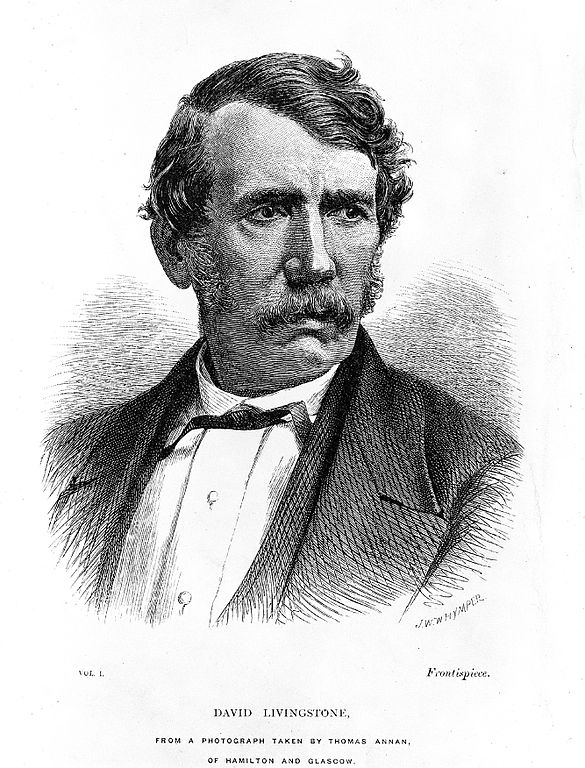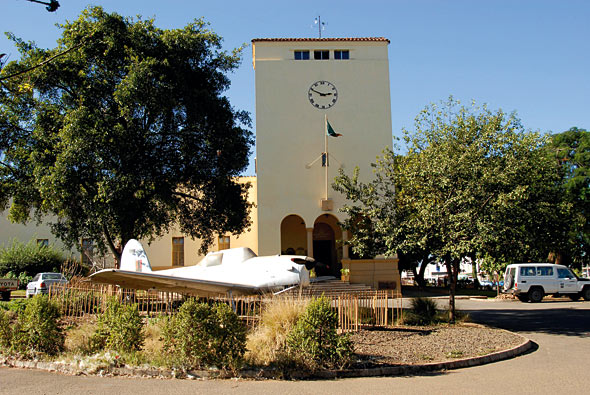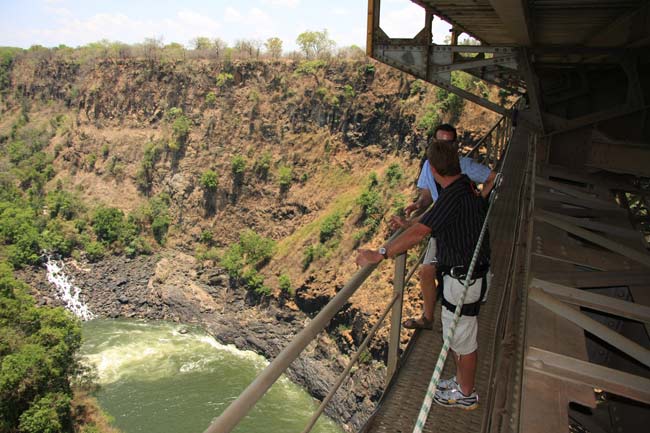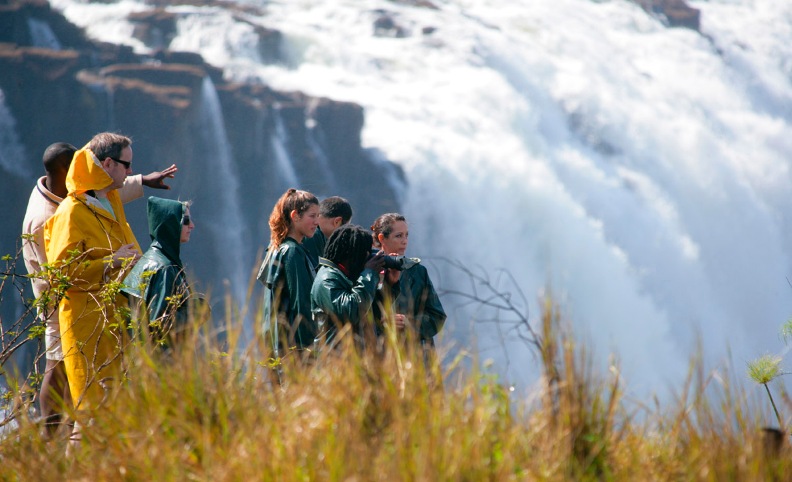History of Victoria FallsPre Colonial History of Victoria Falls
Diggings in Archaeological sites found around the falls area have yielded Homo habilis stone artefacts that date back to some 3 million years ago. Middle Stone Age tools (50 000 years) and Late Stone Age weapons and digging tools (10 000 and 2000 years) have also been found. Khoisan hunter gatherers using iron tools displaced these Stone Age people and they in turn were displaced by the Southern Tonga people now known as the Batoka tribe, these people still live in the area today. Later many more tribes arrived these included the Matabele and the Makololo tribe, also still present in the area. It was members of this Makololo tribe that escorted David Livingstone the first European ever to see the falls down the river on the 17th November 1855. Livingstone returned to the area in 1860 to make a detailed study of the falls with John Kirk.
History of Victoria Falls since 1900European settlement of the Victoria Falls area started around 1900 in response to the desire of Cecil John Rhodes for the exploitation of natural resources north of the Zambezi such as the huge timber forests, the ivory and animal skins and the mineral rights. Until 1905, the Zambezi River was crossed above the falls at the Old Drift, this was in a dugout canoe or a barge towed across with a steel cable. Rhodes' had a vision of a Railway line that stretched from Cape to Cairo and he initiated plans for the first bridge across the Zambezi to be built. 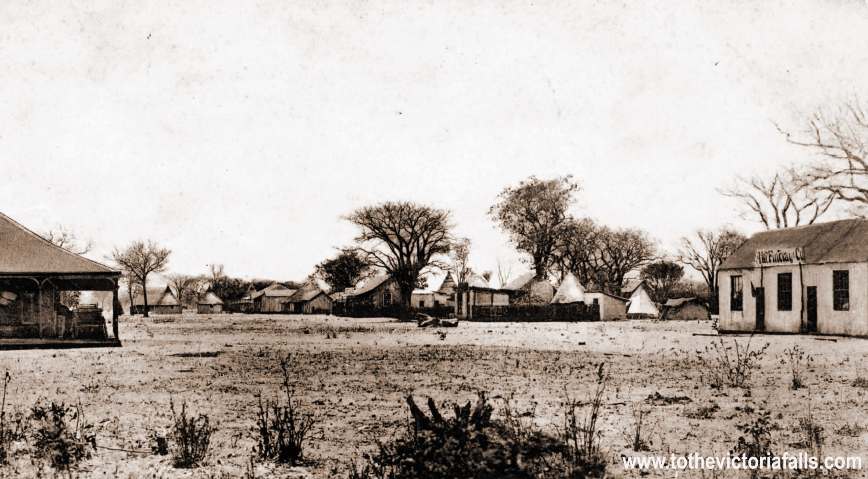 The Old Drift 1900 (photo - www.tothevictoriafalls.com) He insisted it be built where the spray from the falls would fall on passing trains. The Victoria Falls Bridge was finished in 1905 unfortunately after Rhodes death, but the railway offered accessible travel to whites from as far south as Cape Town to as far north as the Belgian Congo. The Falls became an increasingly popular attraction during British colonial rule of Northern and Southern Rhodesia (Zimbabwe), with the town of Victoria Falls becoming the main tourist centre. By the late 1990s, almost 300,000 people were visiting the falls annually, and this was expected to more than triple to over a million in the next decade. History of Victoria Falls during Zambia's independence and Rhodesia's UDIIn 1964, Northern Rhodesia became the independent state of Zambia. The following year, Rhodesia made a unilateral declaration of independence (UDI) this was not recognized by the outside world, which led to war in Rhodesia on the south side of the Zambezi. Due to this conflict Zambia in 1966 restricted or stopped border crossings and did not re-open the border completely until 1980 when Zimbabwe gained its independence. This brought about comparative peace. The 1980s saw renewed levels of tourism and the region developed rapidly especially as a centre for tourism and adventure sports. Activities that gained popularity in the area include white water rafting in the gorges, bungee jumping from the bridge, tiger fishing, horse riding, canoeing, and flights over the falls. Historically the number of visitors to the Zimbabwean side of the falls has been much higher than the number visiting the Zambia side. This is due to the greater development of the visitor facilities there. However, the number of tourists visiting Zimbabwe began to decline in the early 2000s as Robert Mugabe’s land reform policy began to increase political tensions in the country. Zambia tourist industry has capitalised on this situation and grown enormously over these years, with occupancy levels now reaching almost 100%. Heritage SiteIn 1989 Victoria Falls was inscribed as a World Heritage Site. What makes the concept of World Heritage exceptional is its universal application. World Heritage sites belong to all the peoples of the world, irrespective of the territory on which they are located. 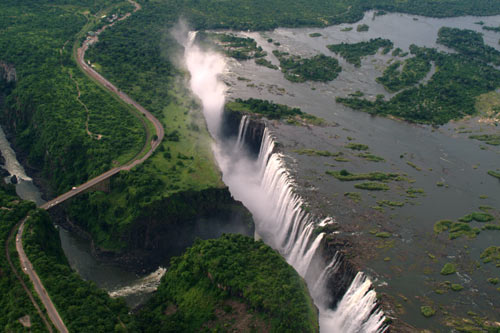 The Victoria Falls - a UNESCO World Heritage Site The United Nations Educational, Scientific and Cultural Organization (UNESCO) seek to encourage the identification, protection and preservation of cultural and natural heritage around the world considered to be of outstanding value to humanity. This is embodied in an international treaty called the Convention concerning the Protection of the World Cultural and Natural Heritage, adopted by UNESCO in 1972. UNESCO World Heritage Site Activities of Historical Interest in Victoria Falls
Return from the History of Victoria Falls to our home page |
|
|||
|
|
||||
|
|
||||
|
| ||||
